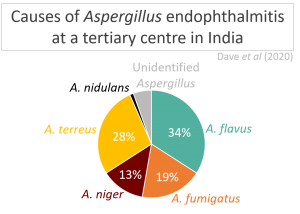Submitted by Aspergillus Administrator on 25 January 2012
It is a fairly well-established fact that many of the antibiotics that have been developed in the past are starting to become less effective as the microbes they are designed to attack gradually become resistant. This is a slow process and can be managed quite effectively by limiting use of our current antibiotics to the more severe cases of infection – this slows the rate at which resistance can occur.
Despite precautions there is still a need to develop new antibiotics to replace those that become useless. Antibiotic-resistance mechanisms can affect more than one antibiotic at a time – a microbe can sometimes become resistant to several similar antibiotics at the same time – so ideally we need new antibiotics that attack microbes in different ways (i.e. new targets) to that which have already been developed.
How can we find new antibiotics that work on new targets? One new strategy is to look at our own immune systems for inspiration. Defensins are naturally occurring small proteins found in some of the cells in our immune systems – in particular neutrophils.
Neutrophils line our lungs and engulf spores (see movie above) to destroy them. Once engulfed it is defensin proteins that attack the spore, punch holes in the cell membrane and literally ‘burst’ the cells wide open.
Scientists have now found how to synthesis artificial defensin proteins and are investigating how we can use them to directly attack microbes – much like a totally new type of antibiotic. One company have discovered that these molecules are effective when used against diverse infectious agents including fungi (Candida) and malaria (an insect!) – albeit only in mice at the moment. They are shown to be far more effective against Candida than nystatin, an existing antifungal drug.
The fact that Candida can be treated with defensin with such efficacy at least in one clinical context (the mouth) raises the possibility that they may also be effective against Aspergillus infections. They seem highly effective in the laboratory – let us hope that this is the dawn of an new era of highly effective drugs that can be used to treat a much wider range of infectious agents compared with older antibiotics, and one that resistance is very slow to develop against.
News archives
-
Title
Date



